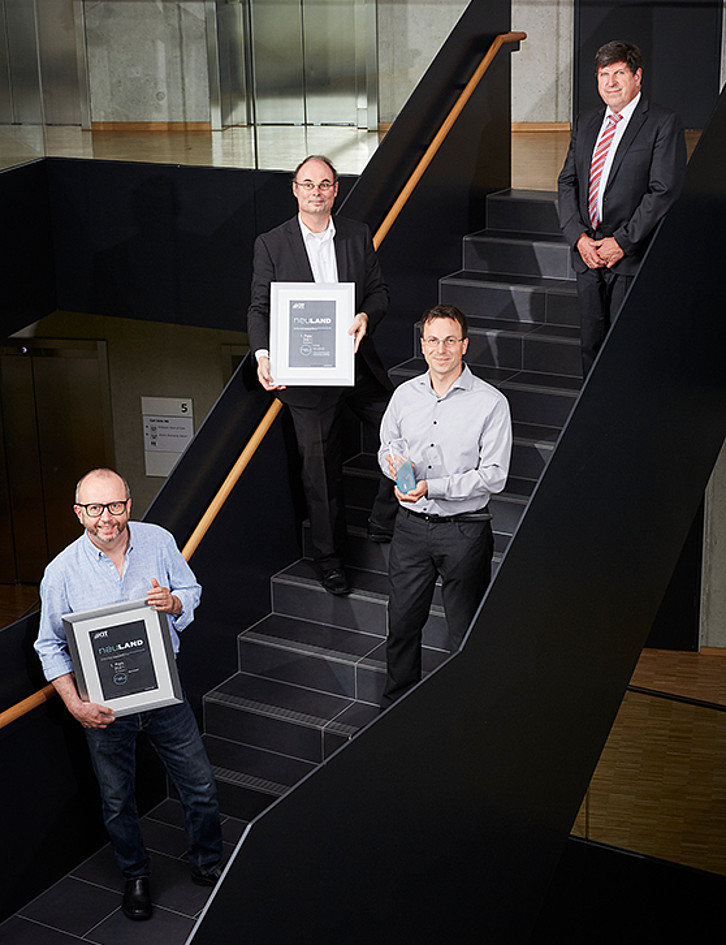Published on September 09, 2021
Q&A: Short interview with the transfer award winner Aquarray
Every year, the NEULAND Innovation contest honors participating scientific employees for their outstanding work in two categories: the idea award and the transfer award. The idea award category represents innovative projects that pursue the goal of bringing technologies and processes to market as products or product components. Ongoing transfer projects automatically qualify for the transfer award category as promising, intellectual property-based projects with industrial partners.
One such transfer project is Aquarray. Aquarray stands for an innovative droplet microarray technology that impresses with lower reagent consumption. Aquarray's goal is to revolutionize the environment of high-throughput screening. The range of applications for an automated screening system and cell screening is broad and extends from pharmaceuticals, diagnostics and biotechnology to the chemical industry.
Award winner: Prof. Dr. Stefan Bräse, Prof. Dr. Pavel Levkin
Institute: Institute of Biological and Chemical Systems (IBCS)
Corporate partner: Aquarray GmbH
Q&A with the transfer award winner Aquarray
Mr. Levkin, what motivated you and your team to participate in the NEULAND Innovation contest?
Our project is a great example of a scientific innovation leading to a commercial product. The NEULAND Innovation contest is a perfect way to make this example more visible to both, scientists and general public.
What is your idea about? What do you want to achieve or improve with your technology?
Our goal is to accelerate biological discoveries and drug development through the use of miniaturization and parallelization. Our technology for surface functionalization and patterning allows such miniaturization of both, chemical and biological experiments using droplet microarrays.
Who is your idea aimed at and how can they benefit from it?
Our idea is aimed at both, scientists as well as biotech and pharmaceutical companies.
What is the current development status of your technology?
Our droplet microarrays (DMA) are commercially available through Aquarray GmbH. Further research and development is ongoing.
What are the next steps in development at Aquarray?
We expect to have the next generation of DMAs ready by the end of this year. The development of a fully automated screening system is also planned for the next year.
Do you already have plans for what you will use the prize money you have won?
Yes. It will be used to further facilitate our technology transfer activities.
What advice would you give to future participants in the Innovation Contest?
Participation in such competitions is important for making new technologies and technology transfer activities developed at universities more visible and understandable to the general public.


comments about this article
No comments